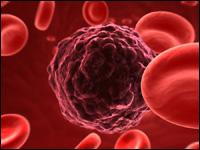Find out more about one of the most commonly diagnosed skin cancers.
While you’ve probably heard about melanoma, a life-threatening form of skin cancer, it isn’t the only form of skin cancer out there. In  fact, basal cell carcinoma is the most commonly occurring skin cancer. In 2010, about 2.8 million cases of basal cell carcinoma were diagnosed in the US alone and these rates are only expected to climb from there. Discover the warning signs that might just mean a trip to see your Peoria, AZ dermatologists Dr. Vernon Mackey and Dr. Chan.
fact, basal cell carcinoma is the most commonly occurring skin cancer. In 2010, about 2.8 million cases of basal cell carcinoma were diagnosed in the US alone and these rates are only expected to climb from there. Discover the warning signs that might just mean a trip to see your Peoria, AZ dermatologists Dr. Vernon Mackey and Dr. Chan.
What is basal cell carcinoma?
Basal cell carcinoma (BCC) is an abnormal growth or lesion that manifests itself from the skin’s basal cells, which are found in the deepest layers of the epidermis. This type of skin cancer may appear as an open sore, shiny bump or even scar so it’s important to examine your skin often so you can pinpoint sudden changes and new growths.
Am I at risk for basal cell carcinoma?
One of the major causes of BCC is long-term exposure to the sun over your lifetime. Anyone who has spent a lot of time out in the sun or has been sunburned is at risk. Those with fair skin and light eyes are at a higher risk. BCC may also be inherited, and those who’ve had BCC in the past are also at risk of developing this skin cancer again in the future. That’s why following through with routine exams from your Peoria, AZ dermatologists are crucial.
What are the symptoms of this specific type of skin cancer?
Since BCC can manifest itself in different ways it’s important to always be on the lookout for these warning signs:
- An open sore that crusts over, bleeds or oozes. These sores are persistent and non-healing.
- A red patch often found on the arms, legs, shoulders, chest and face. The patch may become crusty, irritated or itchy. But it doesn’t always cause issues.
- A shiny bump that is either clear, pink, red or white (but it can be dark, as well). Those with dark hair may confuse these bumps for moles.
- A pink growth that has an elevated border and a crusty indented center. Tiny blood vessels may also appear on the surface.
- A scar-like patch with uneven borders. The skin will often appear tight and shiny.
It’s important that if you notice any changes to your skin that you come into our office for a proper diagnoses. Skin cancer is nothing to ignore, but when your Peoria, AZ dermatologist can diagnose your condition early it’s easier to treat. Call Advanced Desert Dermatology to schedule your next screening or appointment.
